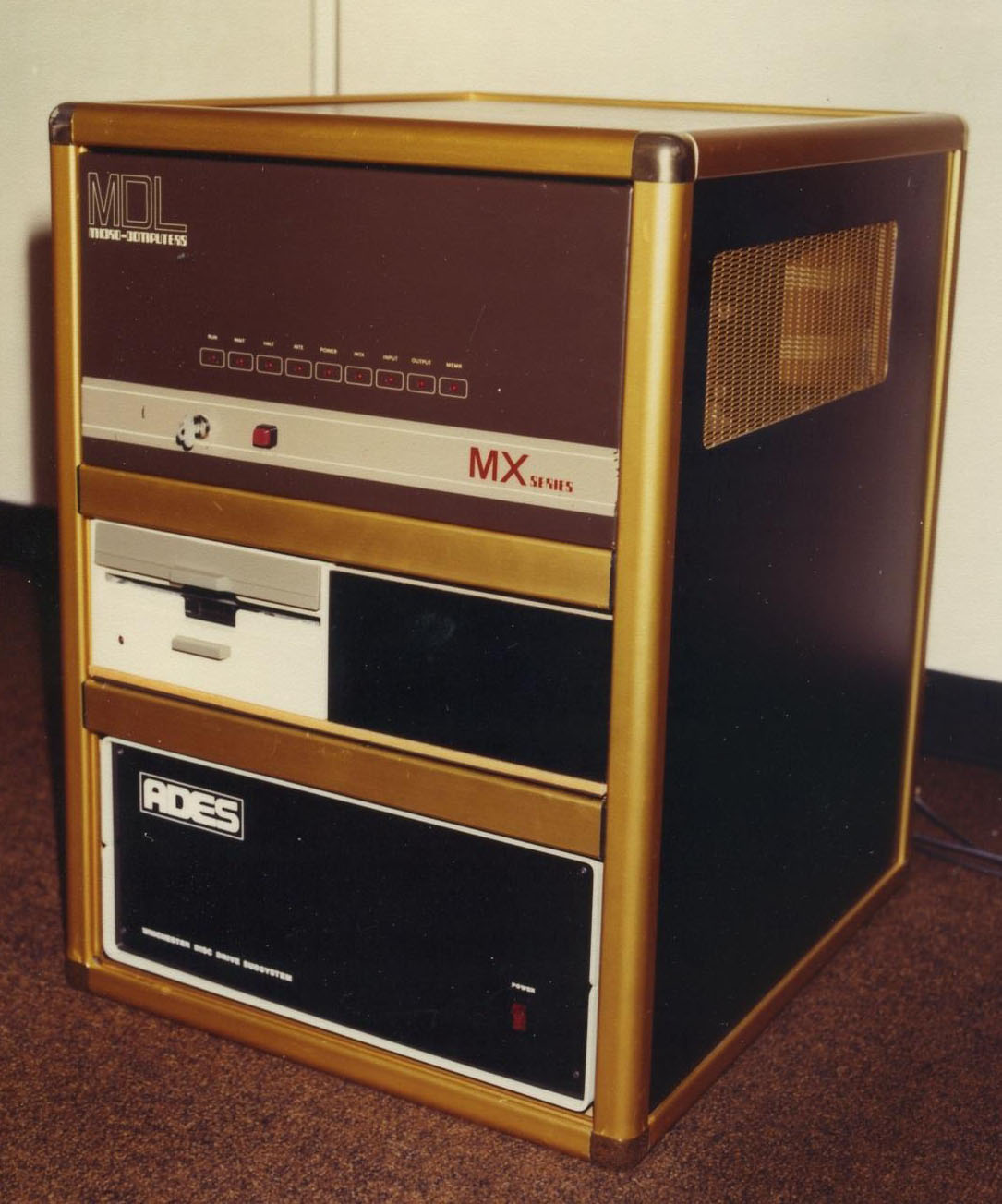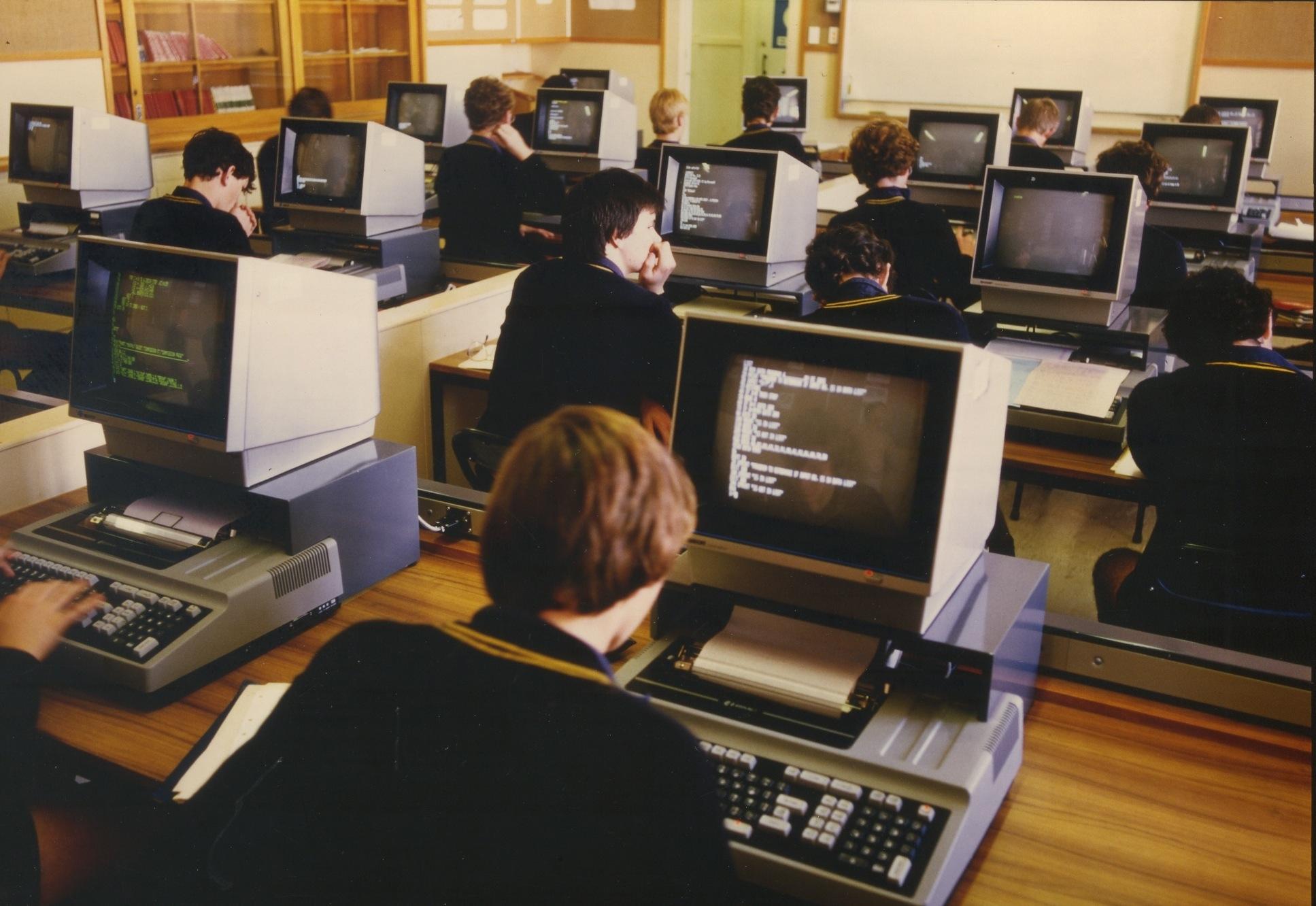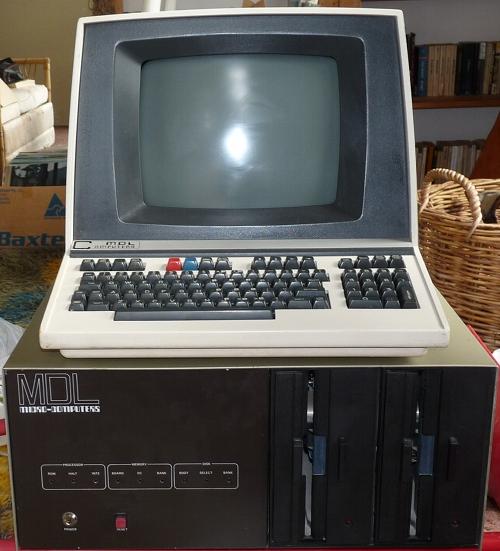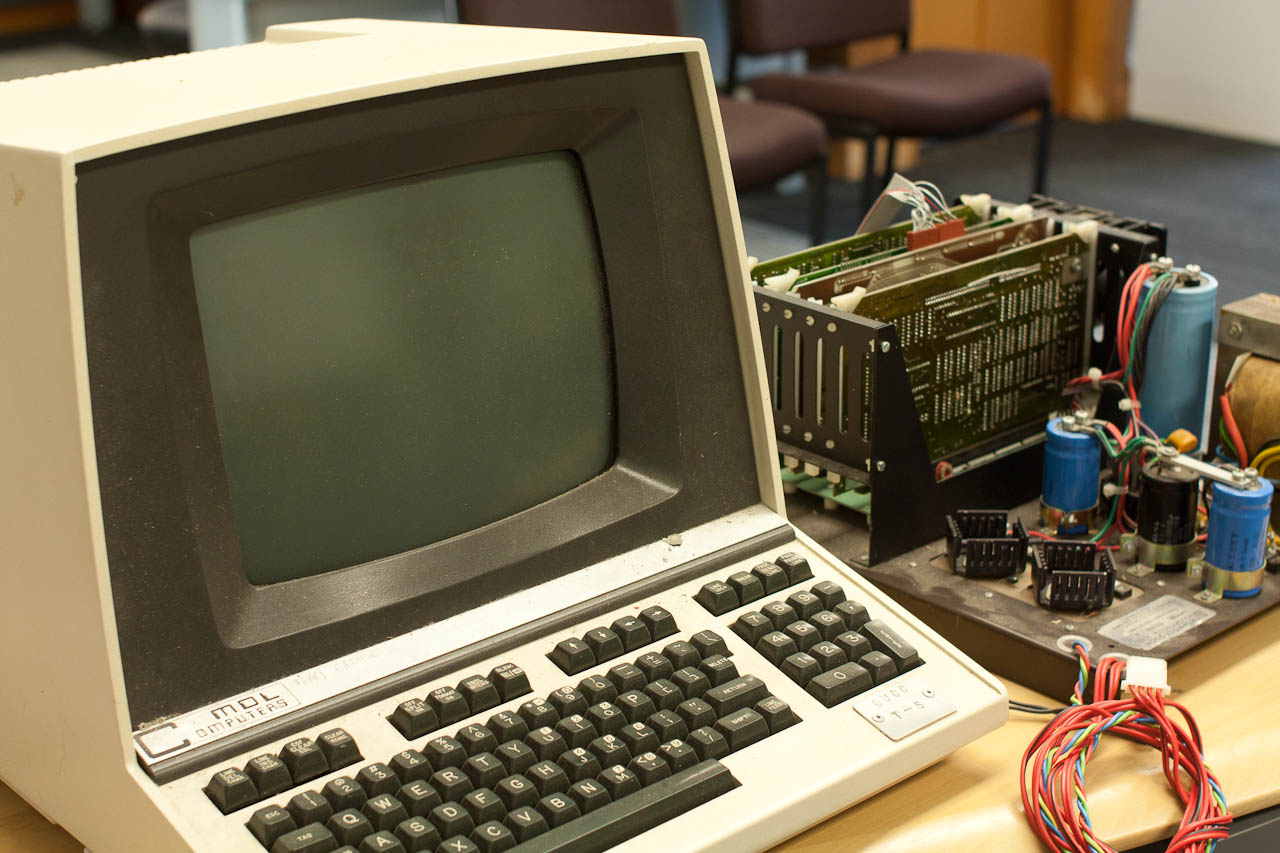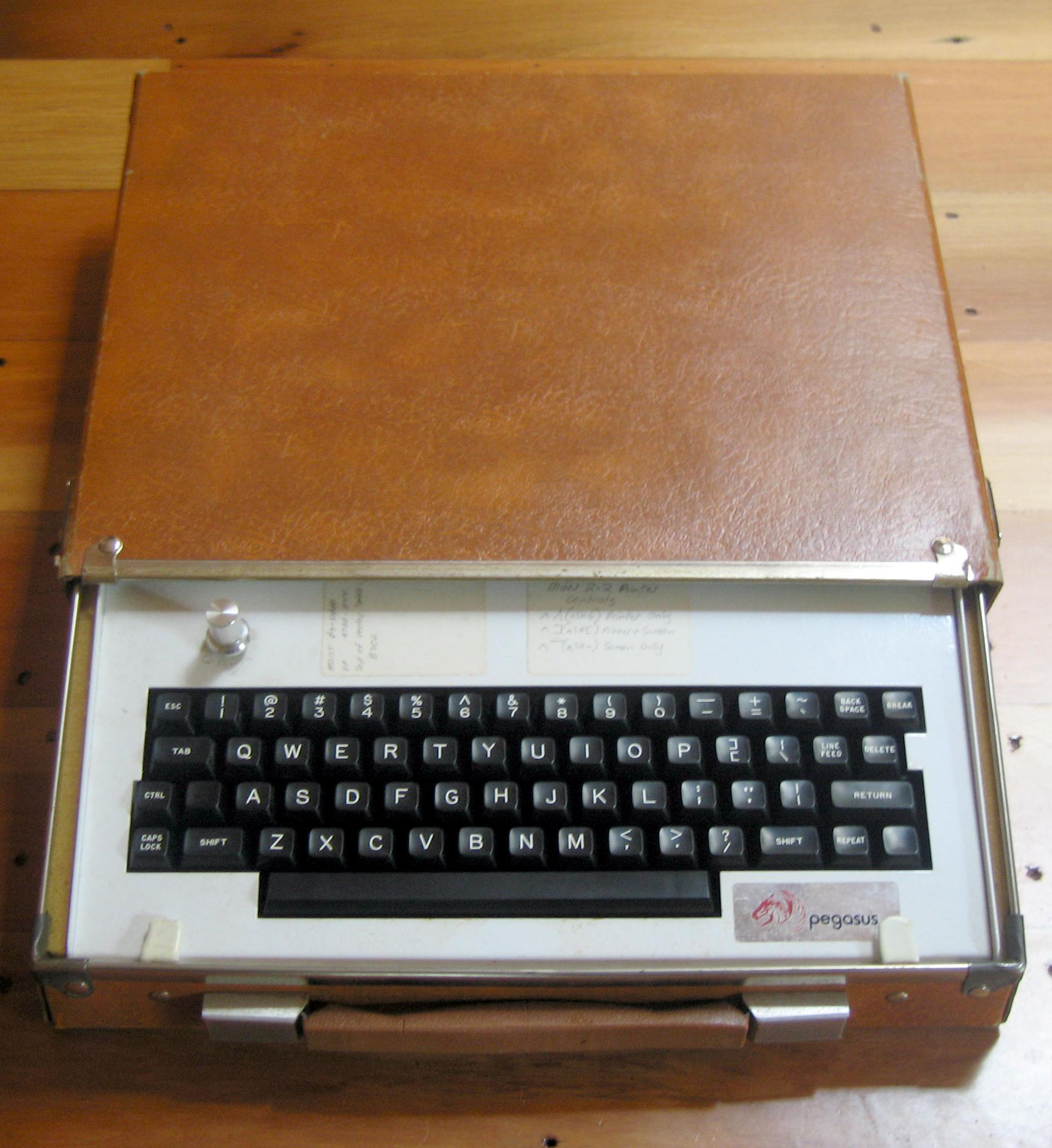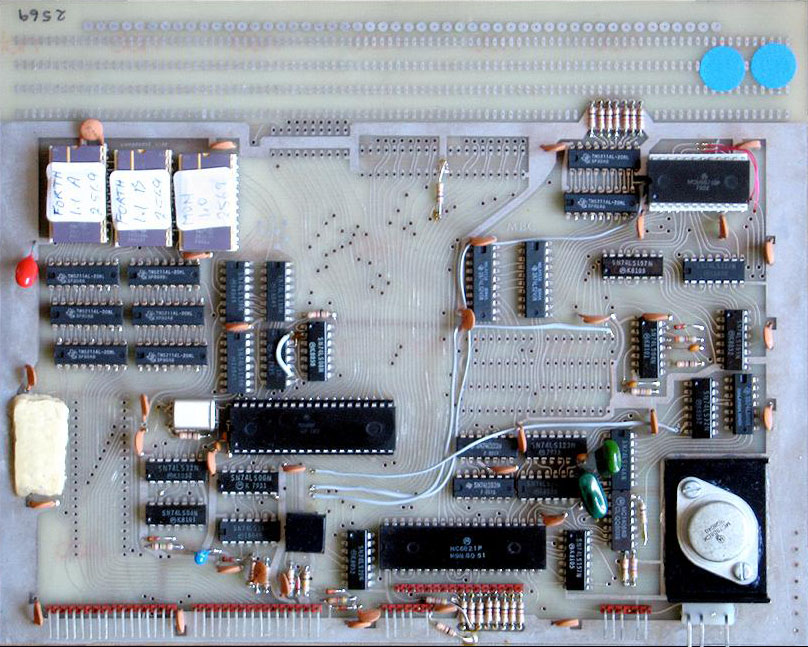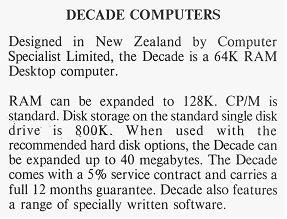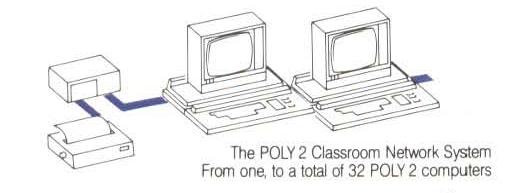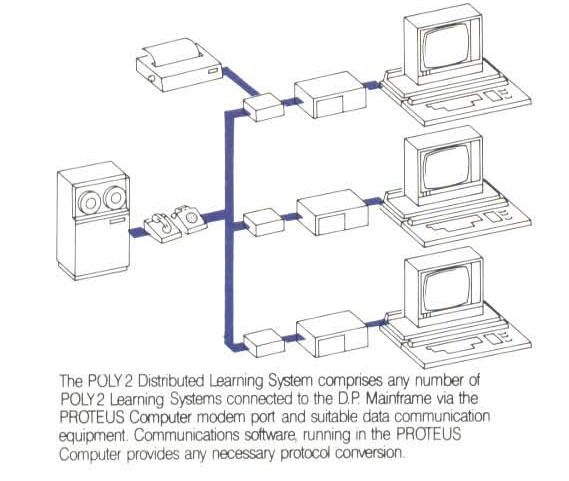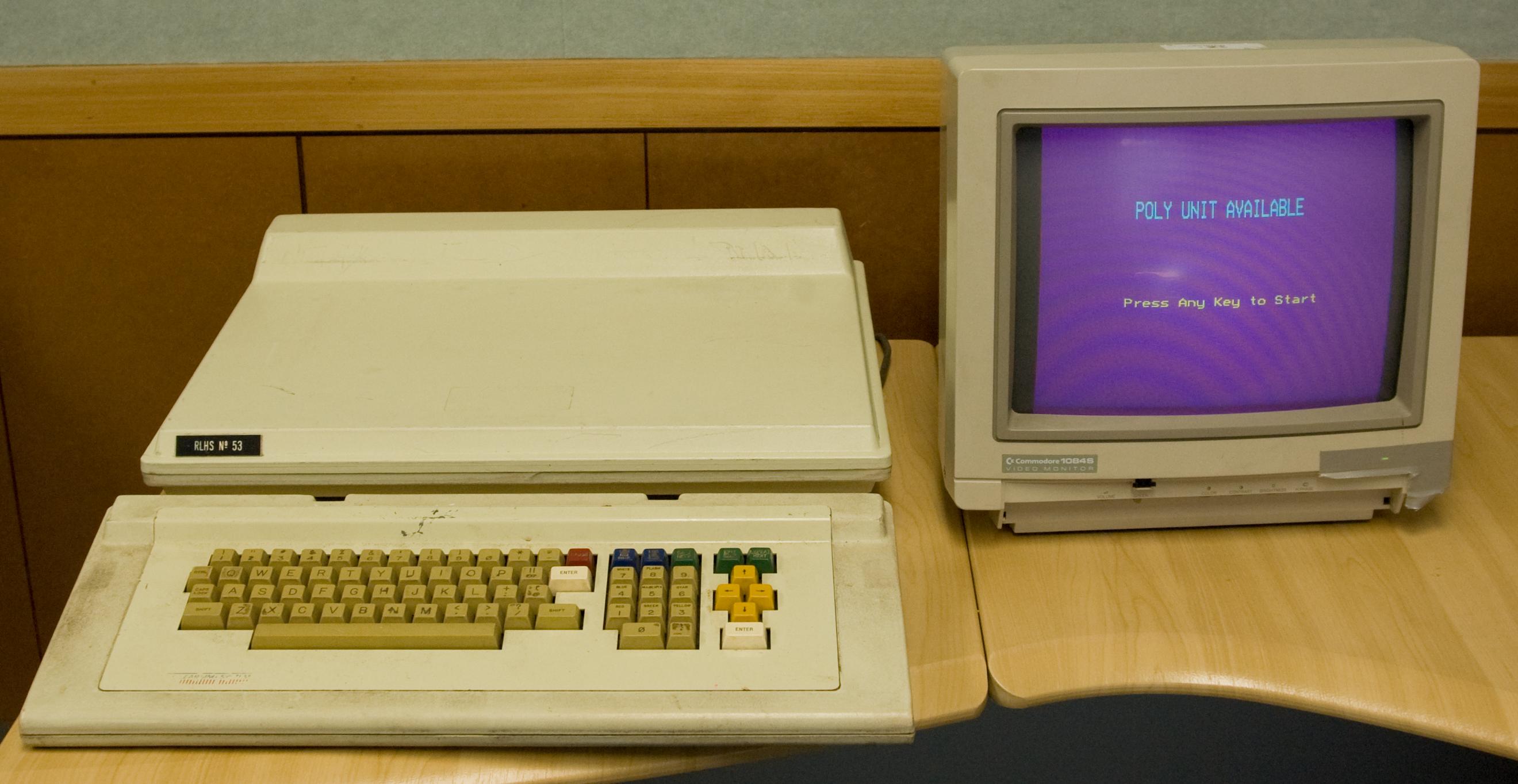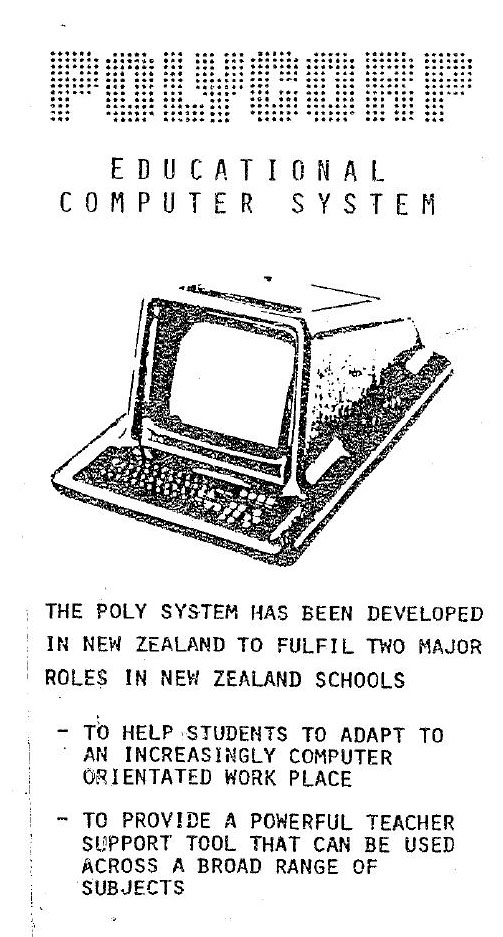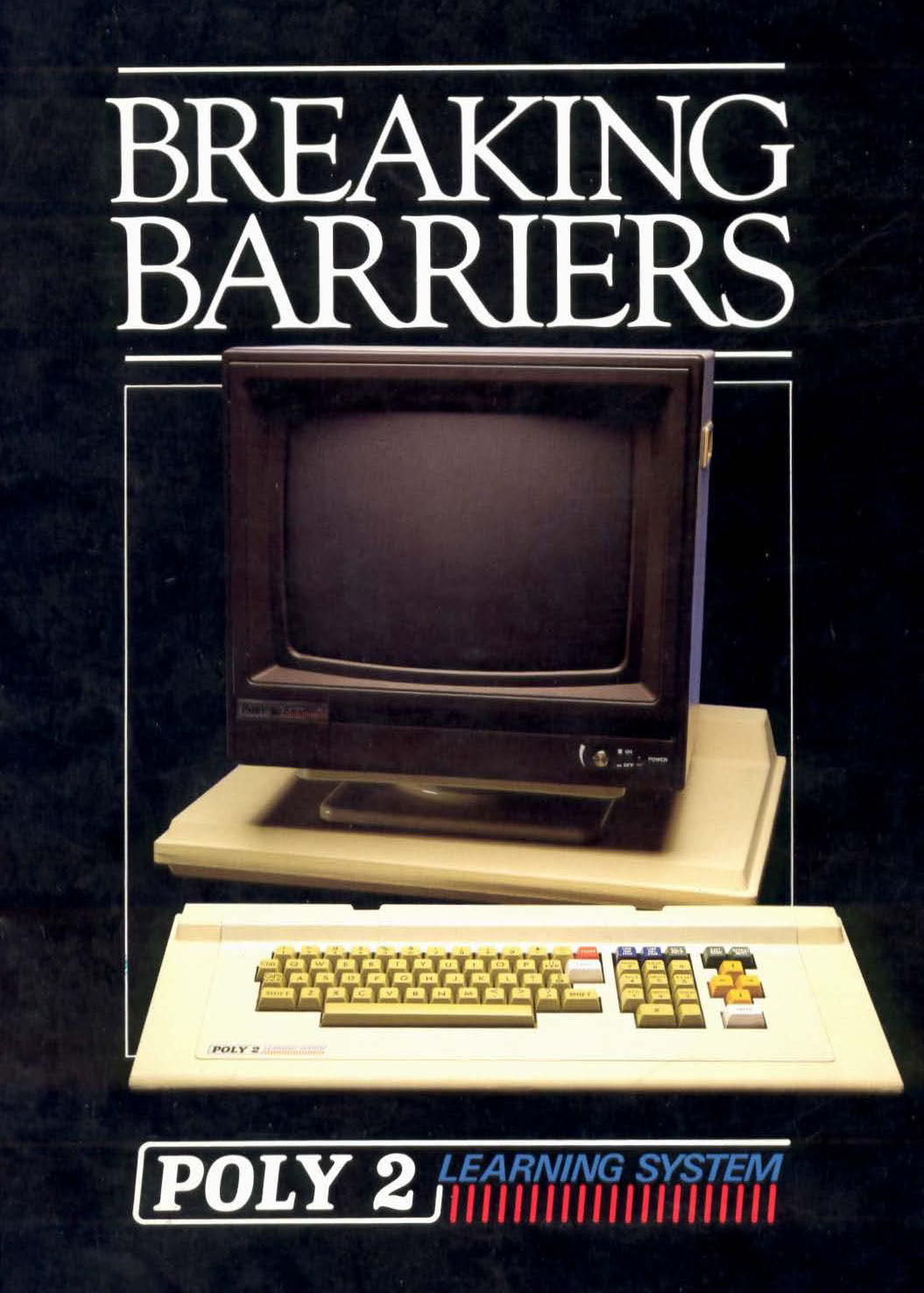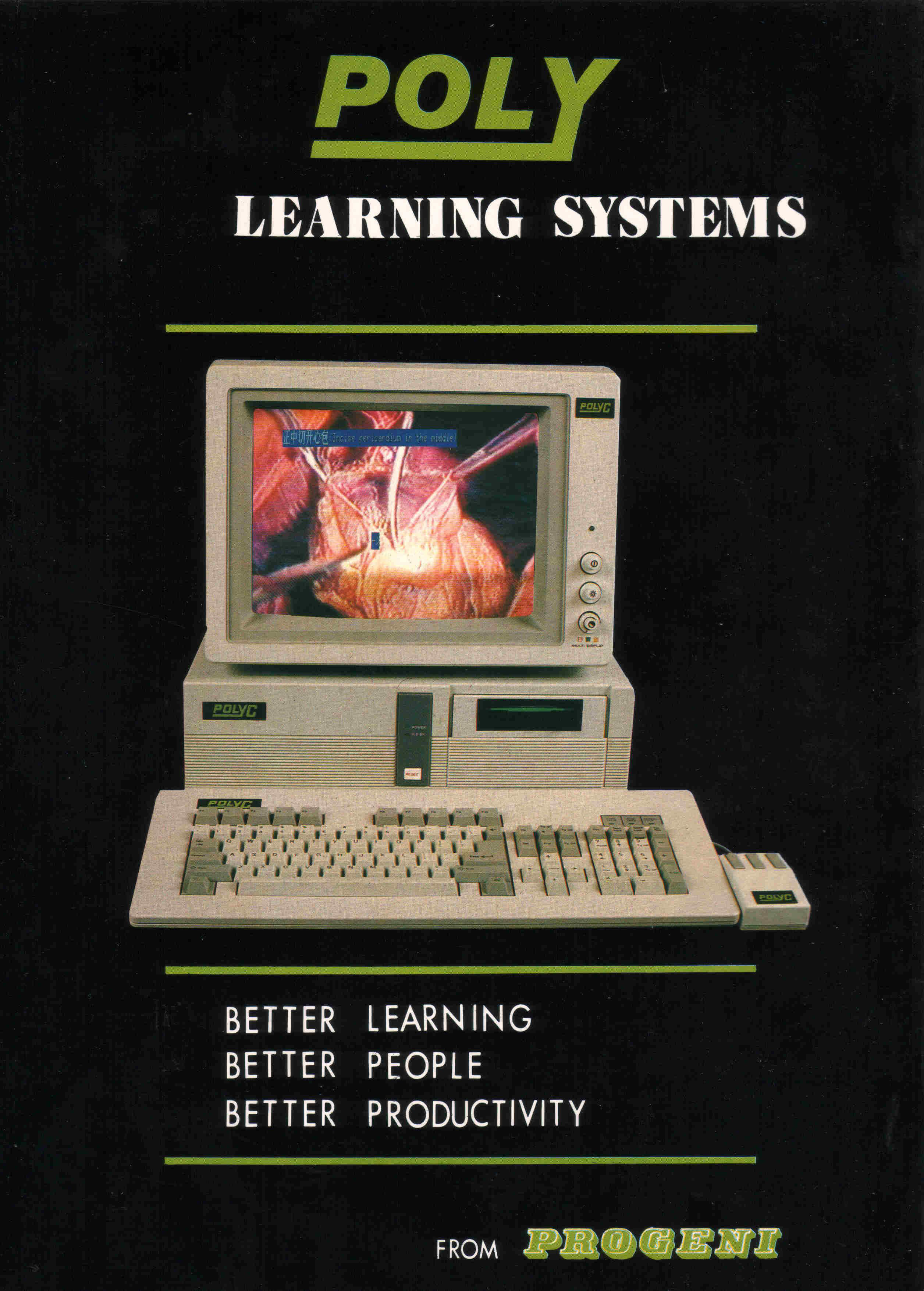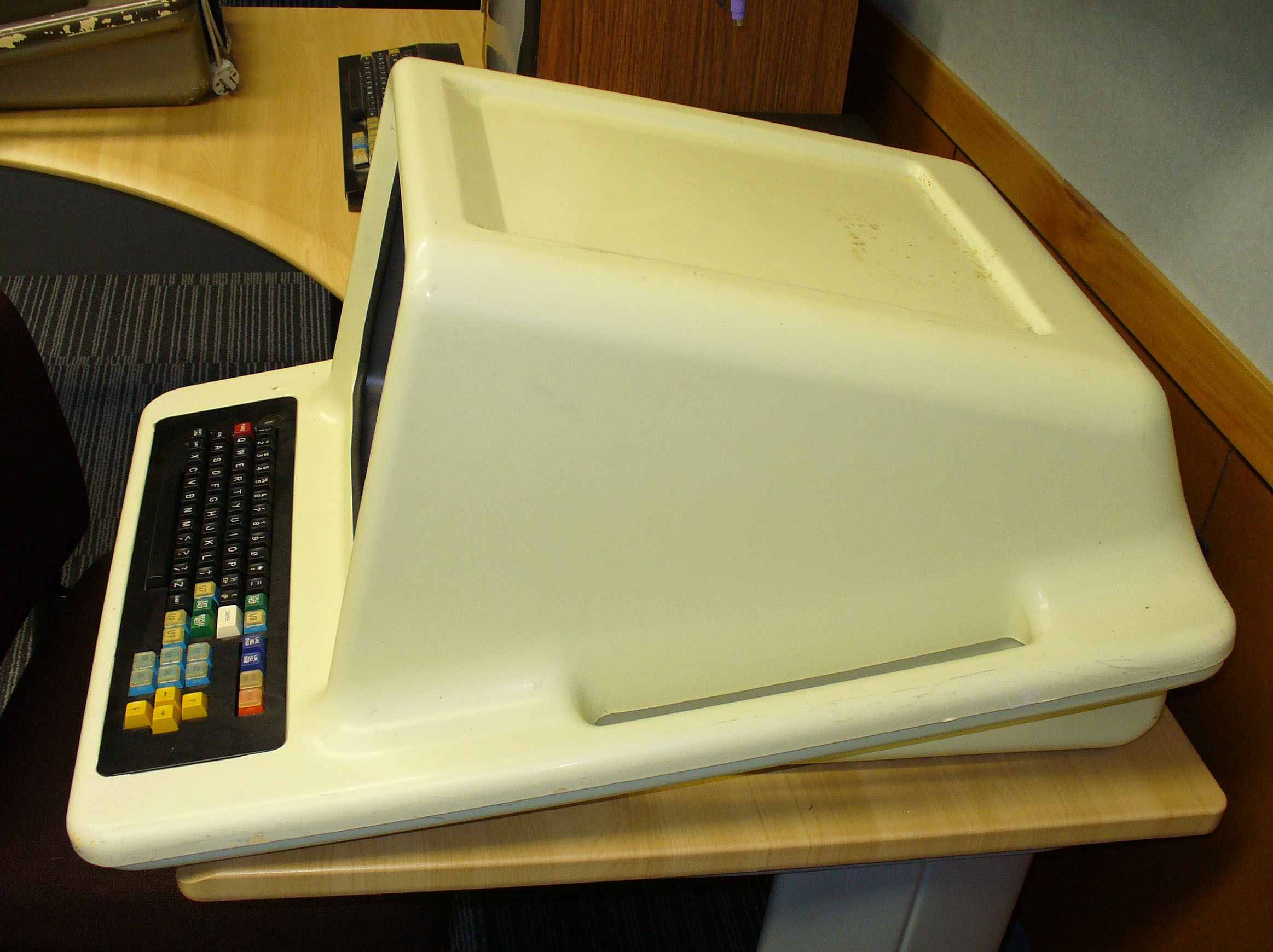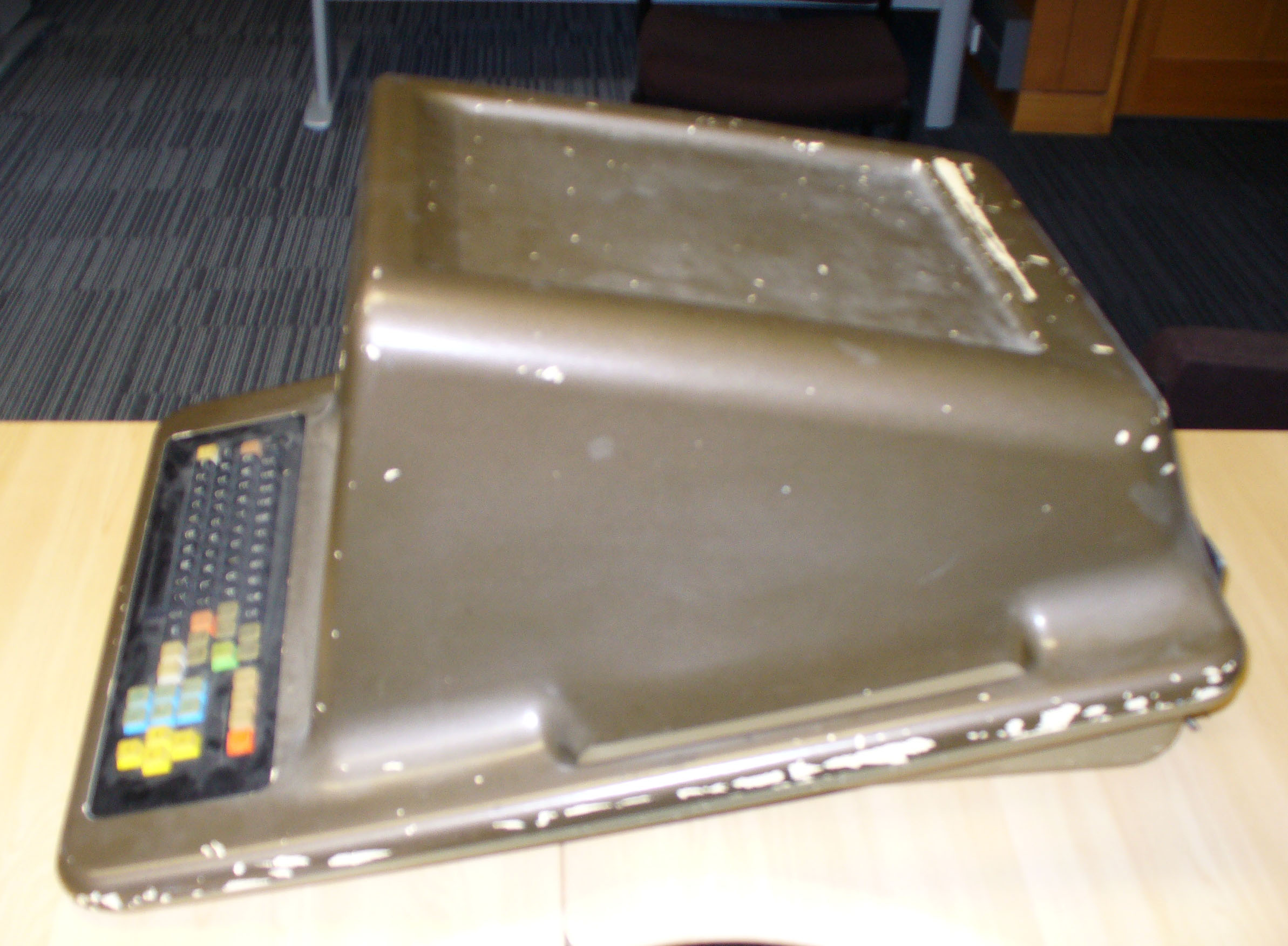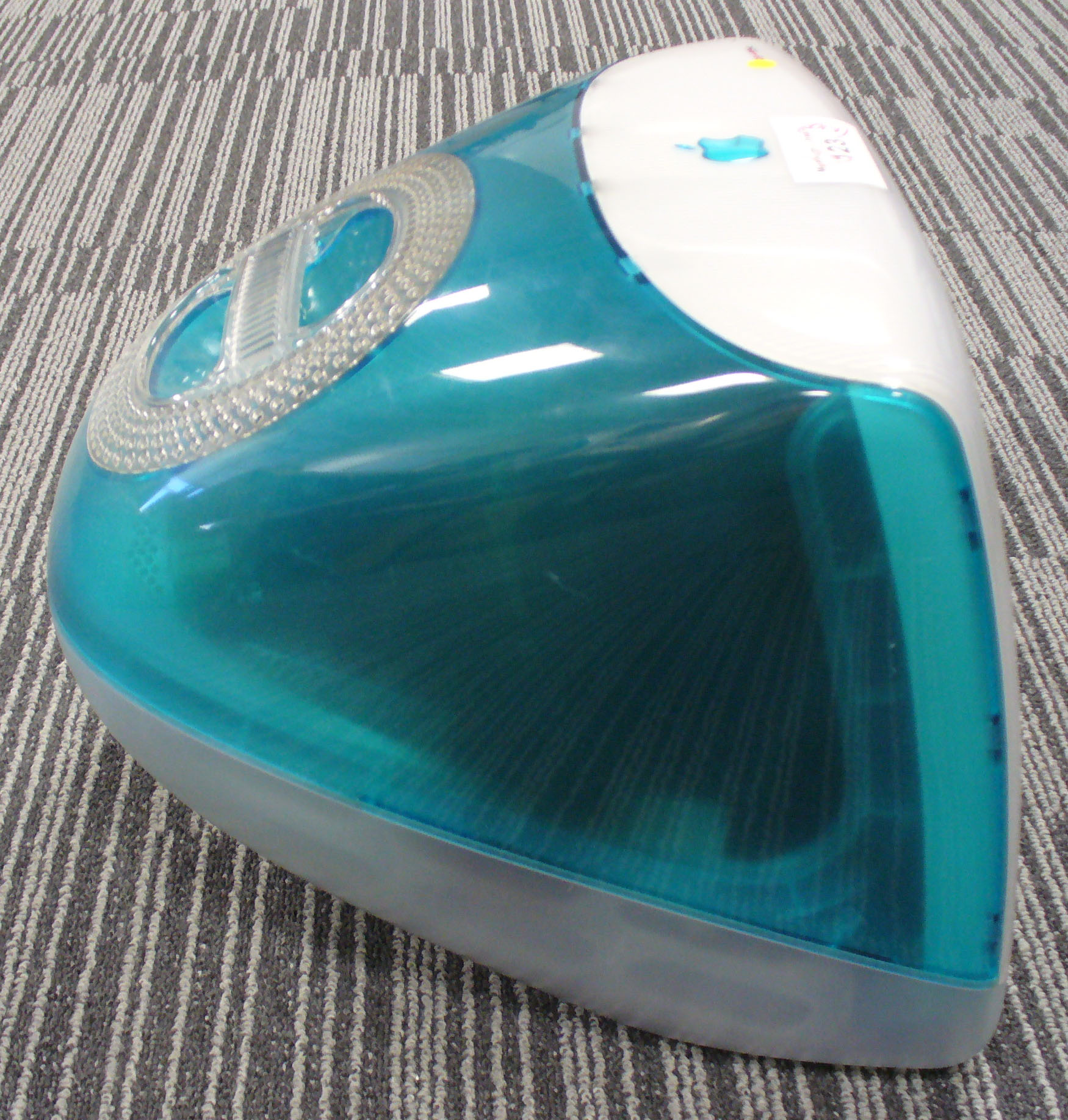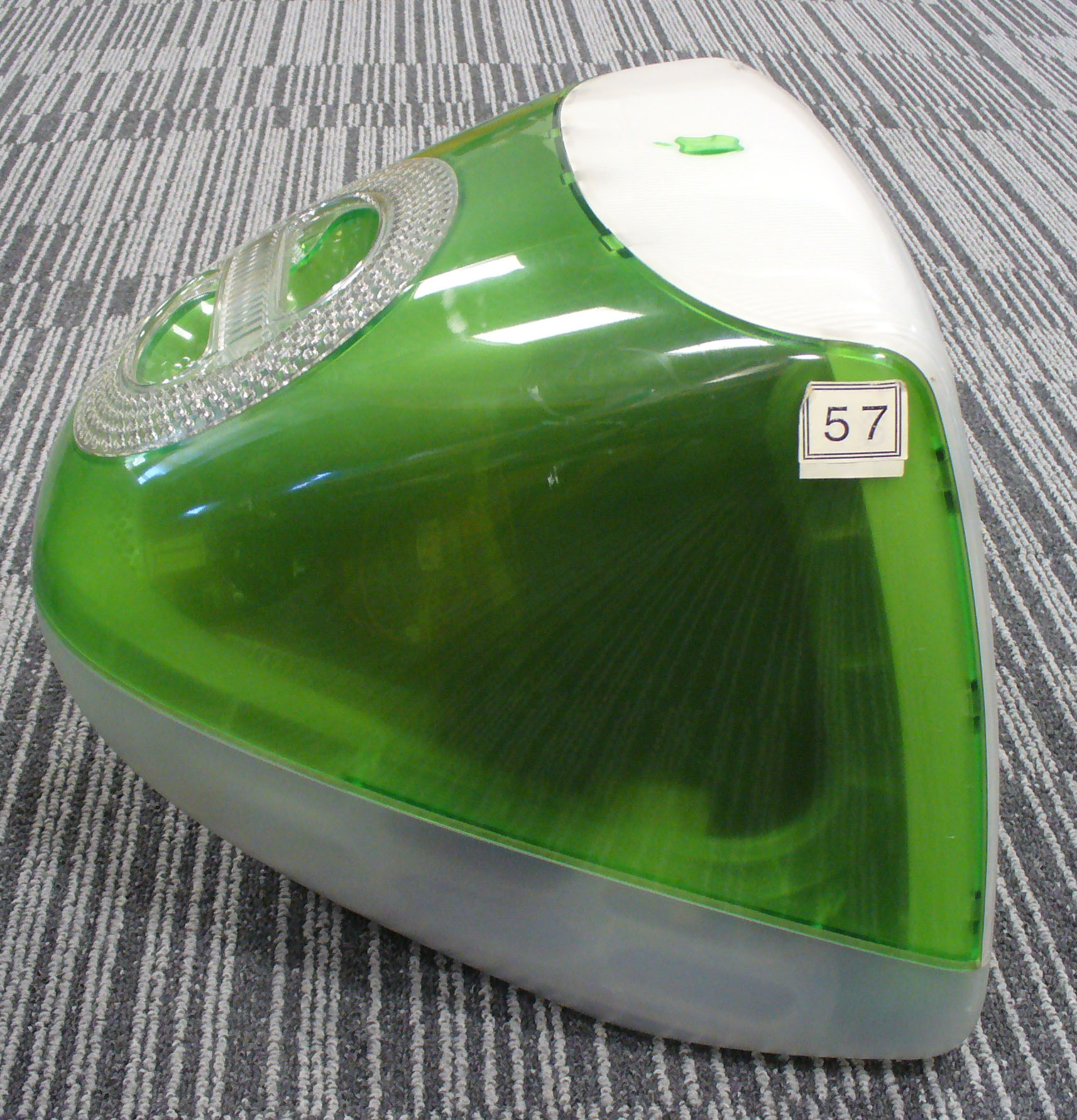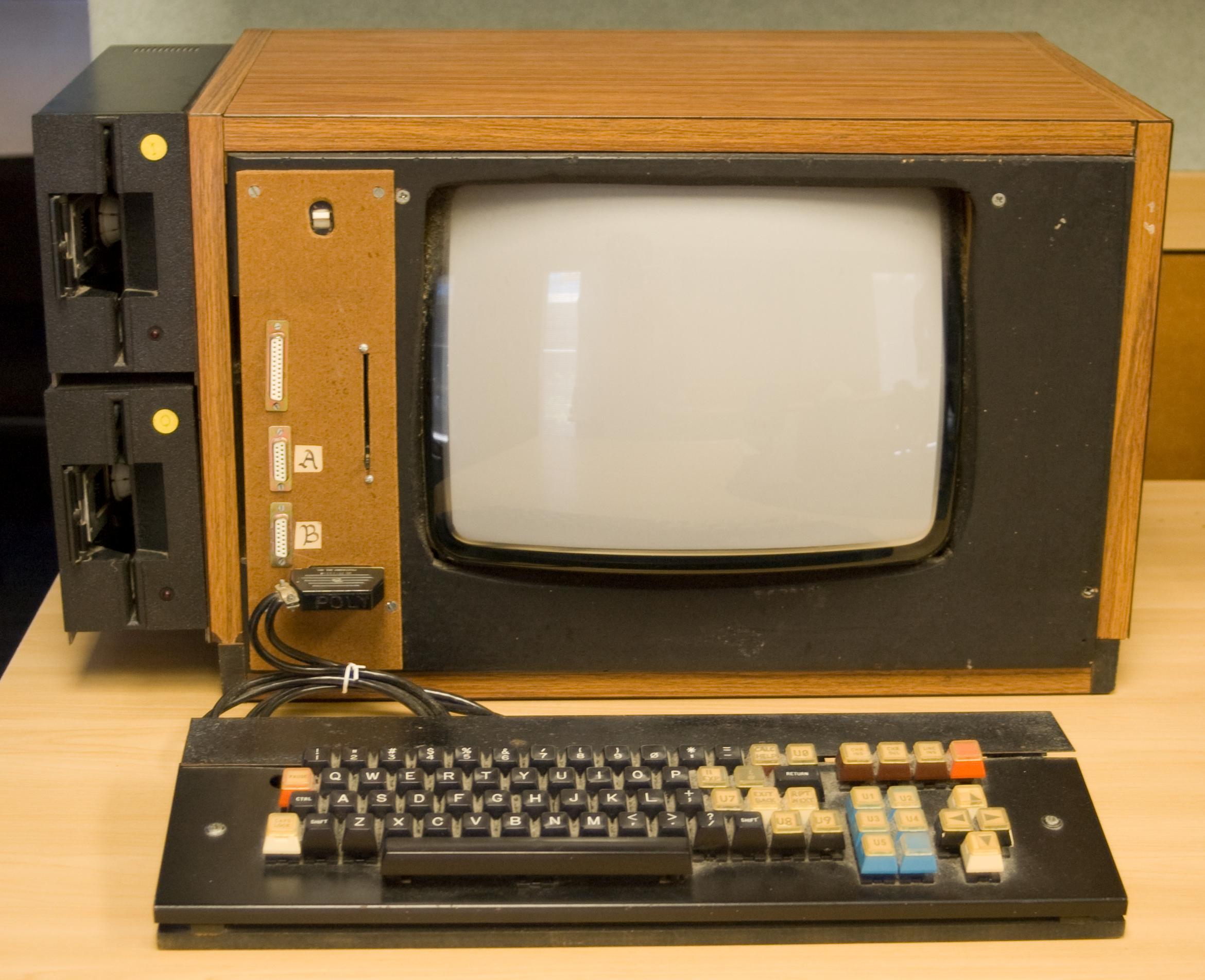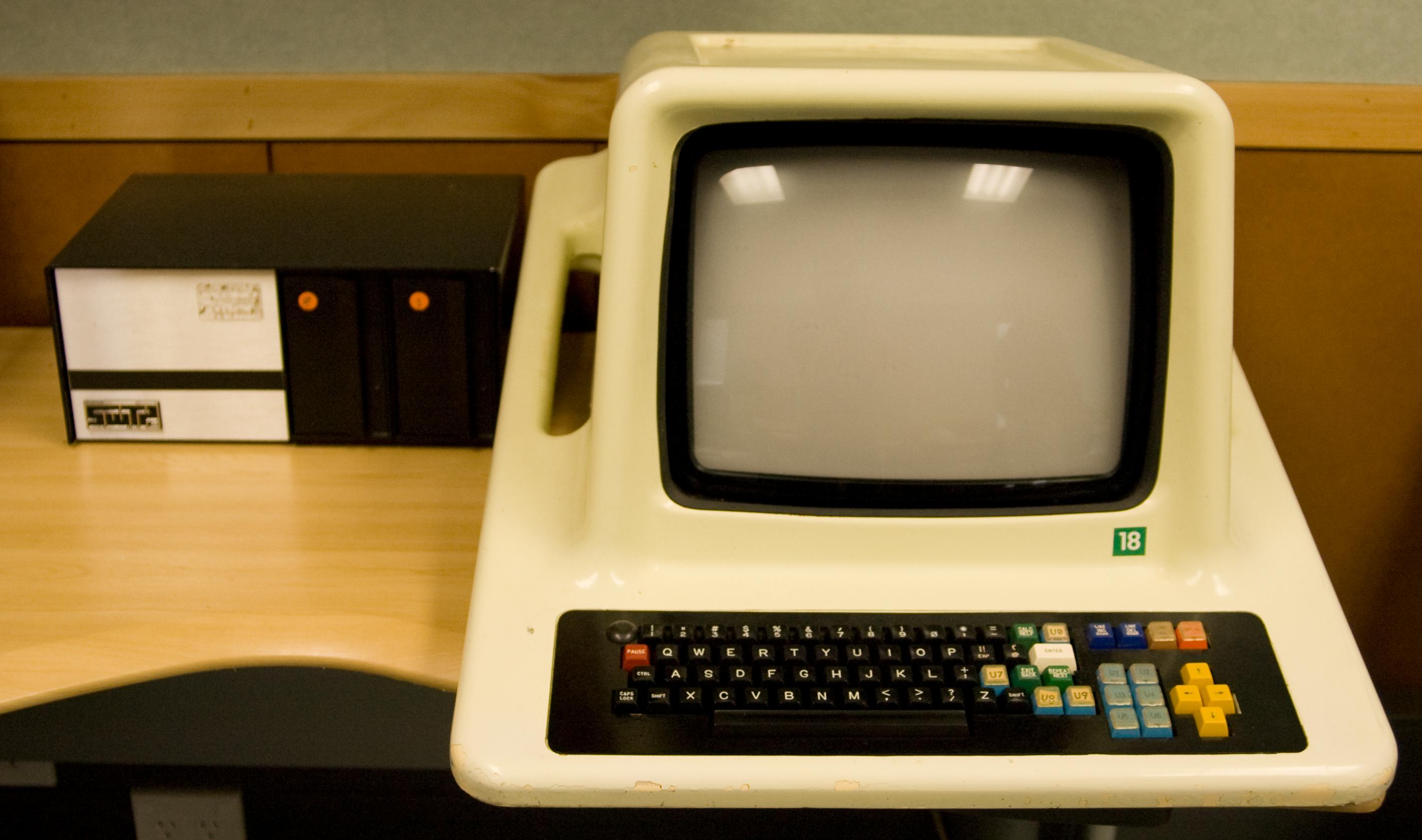Preserving Our Heritage: New Zealand Made Computers
Bob Doran and Andrew Trotman
Introduction
In late October 2009 Marcus Boielle placed an advert on TradeMe to sell one five and a quarter inch floppy disk (listing #250748254). The auction posting included a photo of that disk as well as photos of other objects in the room; and asked for expressions of interest. The room had belonged to the late Paul MacDiarmid, a microwave technician turned fiberglass laminator who collected old things (including computers) and Marcus was liquidating his estate. The photos included pictures of a Poly, one of the most iconic New Zealand designed and manufactured computers. News of a Poly on TradeMe travels fast. Trotman was soon in touch with Boielle, Doran with Trotman, and so on. But how to win the auction? Our interest lies in the restoration and preservation of New Zealand made computers. A field that is not only (almost) neglected by our museums, but in which it is impossible to raise research funds.
Boielle had cunningly disguised his auction by selling a disk. We responded in like; we offered our services in helping itemize the objects in the estate for first refusal on any New Zealand made computers. The offer was accepted.
On November 21st, Boielle, Doran, and Trotman met at MacDiarmid's residence in Rotorua. The morning was spent emptying the room; it was packed floor to ceiling with electronics. In the room we found that Poly, a Poly 2. We then moved to the basement in which a collection of Poly 2 was found wrapped in black rubbish bags. In the garage was a Poly 1 and an MDL. Microprocessor Developments Ltd (MDL) was another significant New Zealand computer manufacturer.
MacDiarmid's estate fully recognized the historical significance of the Poly and the MDL. They were also more interested in preserving that history than selling to the highest bidder. They donated the MDL to the University of Auckland Computer Science Department for inclusion in their Computing History Displays (curated by Doran). They donated the Poly 1 and some Poly 2 to the University of Otago Poly Preservation Project (curated by Trotman). We formally thank them for this.
Ten months later the New Zealand Computer Society held its 50th anniversary conference in the very same city (Rotorua). At this conference we presented our work in preserving the history of New Zealand designed and manufactured computers. Unexpectedly, the conference gave us the opportunity to discuss these machines with users. In the case of the Poly we were lucky enough to meet users, sales people, and the CEO of Progeni (Perce Harpham). Somewhat expectedly, the conference also provided an opportunity to research some of the other New Zealand designed and manufactured computers.
There was only a short window of opportunity when New Zealand made computers were viable: between the introduction of microprocessors (about 1975) and the time when personal computers became a commodity (about 1986). We have identified four such computers.
Arising from engineering there were the computers of Microprocessor Developments Ltd. (MDL). The Aamber Pegasus and the Decade were machines designed by graduates of the University of Auckland. Perhaps the most successful New Zealand designed and manufactured computer was the Poly computer manufactured by Progeni.
Undoubtedly there were other local machines and we welcome our attention being brought to these. In some cases we know a computer was marketed but have no details. The New Zealand Motorola Microcomputer User Group, for example, marketed the “Group development system” and the “Aleph Single Board System”. Only a PO Box number from 1984 is known!
There was, and continues to be, a vibrant electronics industry in New Zealand. That industry is responsible for the design and manufacture of custom electronics. In the 1980s EISS Subtronics of Dunedin, for example, designed and manufactured 6809 based embedded systems. For the purpose of this work we do not consider embedded systems as computers. We include only machines known to have been sold as general-purpose computers, even if targeted at a specific market (such as education). We also exclude compatible replacements for commodities (the PC) which, too, have a long and continuing history in New Zealand; we leave their story as future work.
Microprocessor Developments Ltd.
MDL was the brainchild of John (Jack) Lovelock. Lovelock is a 1950s graduate in Civil Engineering from the University of Auckland. His early career was in engineering consulting in Auckland. This led to an interest in computers, particularly for the structural analysis of buildings. He saw an opportunity for providing locally-designed systems, hardware and software, and in 1978 founded Microprocessor Development Systems. Initially the company was under the wing of his engineering consultancy (John Lovelock & Assoc.) but it later operated independently.
MDL both designed its own computer systems and acted as an agent for overseas producers. Their computers were designed around the Zilog Z80, the S100 bus, and Digital Research Inc.'s CP/M operating system.
Different versions of the machine were developed, but used a common core of software. The initial MDL's were single-user but MDL slowly developed a multi-user computer; the MX (Figure 1). The MX's internal architecture comprised a single Winchester disk and tape storage connected to a set of Z80 microprocessors — one per user terminal.
The largest sale of these machines was to a consortium developing applications
for New Zealand local government. Other notable sales include classroom sets
(with colour terminals) to Auckland Grammar School (Figure 2) and the
Waikato Polytechnic. There they were used for teaching spreadsheets, database,
word processing, and accounting software. By October 1984 there were 84 MDL
computers (with BMC colour monitors) in secondary school classrooms.1
MDL computers were assembled from components and boards bought from overseas, but boxes and power supplies were manufactured locally. A considerable quantity of software was developed locally for interfacing the peripherals (amongst other things). At one point MDL was employing as many as half a dozen full-time programmers. Early development of the systems was guided by, and modeled-on, systems and concepts from JPL in California and the University of Uppsala.
Importing and retailing peripheral devices and software was central to MDL's business success. They were the New Zealand agent for Epson products, Epson were known for their printers (including the MX-80). Sales of early hard disks were also strong. MDL marketed the Peach Tree business solutions software including the Magic Wand word processor.
In 1981 a group of New Zealand local bodies acting under the title “Matamata Local Authorities Computer Group” issued a RFQ (request for quotation) for hardware and software. The RFQ specified a total of 30 systems to be delivered in stages plus provision of software which included rating, payroll, and general ledger. There were 15 proposals received from an international range of computer system vendors but MDL was awarded the contract (with software development in COBOL to be performed by another New Zealand company, Interactive Applications Ltd.). There were two configurations specified. The smaller with one terminal, a 31MB Winchester disk, 8” floppies, and a printer cost $21,000 and the larger with an extra terminal and printer cost $26,000.2
Others built on the MDL machines to bring products to the local market. Notable among these was Neil Harker who developed accounting systems based on DBase. Harker marketed these under the name of Yield. He, consequently, generated many sales of MDL computers. Harker's company continues to trade as the very successful eAccounts Global Ltd.
MDL grew at the phenomenal rate of 100% per year. At its peak it had a turnover of over $5M per year with over 60 employees. MDL was rated a most innovative New Zealand company in its heyday.3 In 1986 the company moved into larger premises in Pah Road, opened by Prime Minister David Lange. It is estimated that total sales of computers were in the range 200-250.
The company gained the agency for the then new AT&T/Ollivetti computers with much publicity. Management realized that there was no future for locally-made non-standard computers and the decision was finally made to move operations into the design of embedded systems.
There was a project to design a gas-station forecourt system for Shell and Group rentals. However, their main project was the development of an EFTPOS terminal. Initially this was in association with ASB but later BNZ provided considerable funding and a contract to purchase 3,000 terminals at $3,500 per unit. A prototype was prepared, demonstrated and signed-off by Databank. It worked well and used advanced (at the time) features such as encryption by microprocessor in the scanner wand. When the BNZ failed it called in its development loan and cancelled the contract. This in turn quickly led to MDL becoming insolvent and the company was wound-up in 1987.
Jack Lovelock moved on to other projects, but none as successful as MDL. He now lives in retirement in Auckland with an interest in VTOL aircraft design. The MDL computers are almost forgotten, however, due to the donation by the MacDiarmid estate the MDL in Figure 3 is now held at the University of Auckland. Mr Robin Wood is also known to have recently donated an MX system to MOTAT, and the University of Otago acquired an MDL from the shed of Stan Andrews Figure 4.
The Aamber Pegasus
During the early 1980s two separate ventures were launched by fresh graduates from the University of Auckland. The Decade came from Engineering and the Aamber Pegasus came from Physics.
Technosys Research Labs was founded at the end of 1980 by Stewart Holmes, a Physics student engaged in preparing an MSc thesis, and his colleague Paul Gillingwater who was a technician in the Electro-technical department of Auckland Technical Institute (ATI), next door.
Together they decided that they could design and make their own computers and created a company (registered 21 August 1980) in cooperation with Ernst (Ernie) Halliday. Halliday was at a company in Takapuna that sold the South West Technical Products Corp (SWTPC) 6809 computers. In fact, they used one of the SWTPC machine to develop the Aamber Pegasus. The division of responsibility in the company was Holmes the hardware designer, Gillingwater the software designer and with Halliday (an older man with a military background) looking after the business.
Development of their machine mostly took place in Holmes' office on the 6th floor the Physics department and other students were recruited from there (notably Paul Carter and Nigel Keam). The company later took up offices in Parnell with, at one time, up to 20 people.
Their product, the Aamber Pegasus (Figures 5 and 6), was targeted at the home hobby market and was offered in a kitset form; though most were sold pre-assembled. It was inexpensive for the time, the July 1981 retail price of a 4KB Pegasus (including BASIC ROM) was $998.00.4 The machine was well received by the initial customers who were typically knowledgeable about computers (or willing to learn). The Aamber Pegasus still has a loyal and enthusiastic following.
The name was selected because of the principals' interest in the fantasy novels “The Chronicles of Amber,” with the doubling of the initial vowel to ensure that the machine was the first in all alphabetically-ordered lists!
Sales of the machine in early 1981 were insufficient to cover expenses and Development Finance Corporation withdrew funding. The owners were forced to sell, and did so to Computer Machinery Ltd. (registered 9 Aug 1976). There was an attempt to expand the market into education with a group of computers using a shared disk but this was not successful. Sales of the computer continued until later in 1981 when it was finally withdrawn. There is uncertainty as to the number of computers manufactured, estimates range from a few dozen to around 100.
Stewart Holmes, a brilliant electronic designer, died tragically a few years later. Paul Gillingwater moved to Wellington where in 1989 he (in partnership with John Vorstermans) established New Zealand's first commercial ISP (Actrix). He is currently resident in Vienna, where he manages information security for a specialized agency of the United Nations.
The Aamber Pegasus has gained a loyal following and Philip Lord has an excellent web site5 housing much valuable information about the machine. The manuals offer a unique look into the philosophy and attitudes of the designers. Starting with instructions on how to get the machine plugged in and started with games (in 2 pages), the manual6 then has a sales introduction from Ernst Halliday, and a welcome by Stuart Holmes that spells-out the philosophy and business reasons for the architecture. Following a brief history of the microprocessor the manual then dives into binary numbers and programming in 6809 assembly code. Schematics are included, but this was common for the day.
The computer was built around the Motorola 6809 processor, rather than the more-popular options (such as the 6502), for reason outlined in the manual introduction. Perhaps the most unusual feature of the machine is that, in order to reduce cost, it had no video controller – rather the computer, in response to interruptions, provided the addresses of data to the video memory. This meant that 90% of the processor's time was devoted to video control (the video could be switched off programmatically to provide more power but the screen then went blank until switched on again).
The software was very ambitious. Rather than using other available operating systems they developed their own monitor-ROM with features including tape backup, printer support, and a simple copy protection scheme. They supported several programming languages including Tiny-Basic, Large Basic (with floating point numbers), Pascal, Forth, and wrote their own assembler/disassembler. Three games were ported to the machine and provided to all users.
The Decade computer
Right from the start of the microprocessor revolution (mid 1970s) engineers in New Zealand saw opportunities for embedding them as controllers of other devices. Such devices were computers, but they had fixed programs and so we do not classify them as general purpose computers. However, out of this industry rose a general purpose computer.
While studying electrical engineering in Auckland, Brett Caulton and Mark Eaton worked for E. T. Smith's Zilab company (of about 30 employees). The company was based in Grafton Road and within walking distance of lectures. They were using microprocessors for engineering. On 26th March 1982 Caulton and Eaton founded their own company, Computer Specialist Ltd., with initial funding provided by their parents.
Computer Specialist designed and produced a general purpose CP/M machine that could be applied to any application. The machine, the Decade, included a Z80 mother board, video controller card, controllers for dual floppy and hard disks, and a cabinet. Although arising from embedded electrical engineering, it was a general purpose computer and advertised as such (see Figure 7). Computer Specialist would sell to anyone but their preferred approach was to find a niche application market, build software for it, and target sales in that market. One such market was general accounting.
Decade computers were also used for specialized hardware application areas. One was to provide a display of news in hotels and bars. This was achieved by leasing data communications lines from the New Zealand Post Office and linking them to news from New Zealand News (the Auckland Star). Another was the use of the Decade by the Auckland Electric Power Board to monitor and control lighting control rooms. In total about 100 Decades were made.
Because Computer Specialist were designing and selling computers for particular applications (as well as general purposes devices) they were able to move on when it no longer made economic sense to build computers. The company adapted by moving to telecommunications devices and designed the first non-NZPT modem to be approved for use in the country. They now operate as Compuspec Industries Ltd. which has remained a successful company and continues to develop and sell innovative new products. (They are known for the Zippy dialer, the world's first line-powered Network Access Device (which listens to a number being dialed on a conventional phone and then automatically routes the call through the cheapest provider).
The Poly computers
The history of New Zealand's Poly computer is well known. Neil Scott and Paul Bryant were teaching Electrical Engineering at Wellington Polytechnic in the 1970s and early 1980s. In 1980 they realized the importance of designing a computer especially for the educational market (schools) and set about building a prototype. At that time the machine was known as the Polywog. Unfortunately the machine was plagued with political problems from the start – the name was considered racist and was consequently changed to Poly.
The New Zealand government also realized the importance of putting computers in schools. Teaching children about computers would place the country at the technological bleeding edge. Designing and building those computers in New Zealand fitted well with the Muldoon government's Think Big policy and the minister for education, Hon Mervyn Wellington, pledged to buy 1,000 computers a year over 5 years. There was a snag; the computers had to meet the Department of Education criteria.
Enter Perce Harpham and Progeni Ltd. Progeni was New Zealand's first software company and had been involved in many computer projects including the Wanganui computer. He was approached by representatives of Development Finance Corporation, a quango investment company. Progeni invested about $250,000 for its share; its role was to bring professionalism and software to the project.
Polycorp New Zealand Ltd. was established with Ian Roxburgh, Robert Platts, and Alec Utting (from Progeni), and Neil Scott, and Paul Bryant (from Wellington Polytechnic) leading the development. It took only an astonishing 8 months to go from Scott's prototype (which didn't have schematics) to 50 working prototypes with software.
The tests came in the last week of May 1981 (26th-29th) in Palmerston North. Representatives from Wellington Polytechnic, The Department of Education, and three schools (Wellington College, Onslow College, and Tawa College) were present. The machines passed all tests and entered production. By June 1984 there were 274 Poly 1 installed (28 Disks units and 44 Proteus).7 An audit of secondary schools in October 1984 show that 116 of those Poly 1 computers were in secondary school classrooms.8
There are no custom components on the motherboard of the Poly. The CPU was the Motorola 6809 with a 64KB address range, but the Poly used bank-switching to give it an address range of 128KB. Eight color text (with block graphics) was generated using a Mullard SAA5050 Teletext chip (24 rows of 40 columns), a technique also used by the BBC micro, but the Poly had two text pages that could be superimposed. Two pages of graphics with a resolution of 204 by 240 in 4 colors were provided. These could be overlaid to produce 8 color graphics, and the 8 color text overlaid on that. A (horizontal) interlacing of the 2 graphics screens provided a single graphics screen with a resolution of 204 rows of 480 columns in 4 colors. The real time clock was a simple counter, the Motorola 6840.
The Poly were diskless clients connected in a token ring network to a server, the Proteus. This device housed dual 8” floppy disk drives controlled by Western Digital 1771 floppy disk controller. It had dual CPU, Motorola 6809 and Z80, and ran CP/M, FLEX, or the Poly's operating system POLYSYS. The network was controlled by a Motorola 6854 Advanced Data-Link Controller installed in the Proteus and each Poly.
By connecting a single Poly to the Proteus in a 1-Poly network it was possible to use the Poly as a terminal to the Proteus running CP/M. By connecting it as a serial terminal to the Proteus it was possible to run FLEX on the Proteus. Up to 32 Poly could co-exist on a network running POLYSYS (Figures 8 and 9).
POLYSYS itself was innovative. Rather than design an operating system from scratch the POLYSYS engineers instead adapted TSC's FLEX, an industry standard 6809-based operating system. The Proteus ran FLEX and an application, POLYNET, which listened to the network for messages. The Poly ran a thin FLEX, POLYSYS, which was essentially a set of call stubs attached to the FLEX entry points. The Poly sent a FLEX FCB (File Control Block) to the Proteus that then performed the FLEX call and returned the result to the Poly. As the network was token ring the Proteus could ensure that FLEX calls would not interfere with each other. The choice of FLEX mean the Poly could run pre-existing software and did, including word processors, assemblers, languages (BASIC, Pascal, Pilot, Logo, FORGE), and games.
The network design extended beyond the classroom. The Proteus (with a modem) could also act as a gateway to a mainframe. The vision was a country-wide academic network with a mainframe backbone and local token-ring networks in classrooms. The software written by pairs (one teacher and one programmer) to ensure both academic and technical excellence. If this vision had come to pass there is little question that New Zealand would have been a technical leader today, but the vision did not.
Although the exact reason the government reneged on its deal remains unknown, it is understood that the then Cabinet "could see no reason why government should spend money so that teachers could do even less work."9 The financial crisis about to hit New Zealand could not have gone unnoticed by the government of the time — a mess that the later Lange Government was forced to resolve.
The Poly's success was noticed by other manufactures. Apple responded by dumping Apple II Plus computers on the New Zealand educational market. Retailing for $4,812 at the time (September 1982), the educational price was $1,200. The Customs Department imposed a dumping tax of $820 on each machine to which Apple responded by increasing the price to $2,020 to avoid the tax. It is hard to compare Apples with Polys (the Poly was networked), but the October 1984 price of a Proteus was $2,500 and each Poly cost $2,100 with monitors retailing from $85010 (for a total cost of $5,450).
Progeni adapted the Poly according to user demands, producing the Poly 2 with a separate keyboard and monitor (Figure 10) and the Poly C (Figures 11, 12 and 13). The Poly C was especially designed for the Chinese market and, unlike the Poly before it, was based on the Motorola 68030 with a considerable amount of custom programmable logic chips. It also had the ability to overlay graphics on video. Few were sold as the machine was going to market at the time Progeni collapsed.11
Progeni suffered the same fate as MDL. The BNZ faced financial difficulties in 1988, called in its loans, and at the end of 1989 appointed receivers. Despite this Progeni brought in $200,000 in orders for Poly from the Agricultural Bank of China, but production had stopped so when approached by the Chinese Petroleum Research Institute and the Fermintological Institute orders had to be refused 12.
The innovations made by Progeni outlasted the company and were beyond technical. The Poly 1 was a single unit machine that came in a variety of (1980s) colours, and included built-in handles for easy carrying. Single unit machines were unusual at the time with monitors (or terminals) typically being sold separately. In 1984, however, Apple released the Macintosh with a built in monitor and a handle at the top (and a detachable keyboard and mouse). In 1998 Steve Jobs returned to Apple and was instrumental in the release of the iMacG3. That machine was eventually released in thirteen yummy “flavors” (and with a detachable keyboard and mouse). Apple's use of (1990s) coloured translucent packaging was considered innovative and was copied by other manufacturers but has recently become out-of-fashion again. Figures 14, 15, 16 and 17 show two of the Poly 1 colours and two of the iMac G3 colours. The similarity in the shape of these machines is striking.
Preservation of computer history in New Zealand
There are some excellent computer museums in other countries including the Computer History Museum in California USA, the National Museum of Computing in Bletchley Park UK, and the Powerhouse Museum in Sydney Australia. There are some excellent technology museums in New Zealand including the Museum of Transport and Technology (MOTAT) in Auckland, and the Ferrymead Heritage Park in Christchurch. Unfortunately the New Zealand museums are only just beginning to recognize the historical significance of New Zealand's computing history.
This fact was made patently clear to us in two recent events. In September 2010 Trotman met Darrin Scott, the son of Neil Scott, one of the designers of the Poly. The Wellington meeting was arranged so that two artifacts could be passed from the Scott family to the Poly Preservation Project. One was the Scott family Poly 1. The other, a true national treasure, was the original wooden-boxed prototype Poly made by Neil Scott (Figures 18 and 19). In a separate incident in October 2010 Trotman was contacted by a donor who had "two Polys in working-ish condition with software/external peripheries", and for which MOTAT had shown no interest.
Interest in computing history is in a trough. We are well past the point at which a computer on the desk was science-fiction becoming reality, and well before the point where digital computers are regarded as historically interesting and worth preserving. Digital computer preservation, consequently, currently falls on the shoulders of amateur collectors unable to halt the decay process. New Zealand's digital computer heritage is rotting in the basements and attics of under-qualified under-resourced collectors. There are, however, some very good collections.
Good collections of pre-digital computers do exist; these include the accounting machinery in the BNZ Museum in Wellington, and the South Taranaki Museum in Patea. MOTAT and Ferrymead have collections of computing artifacts, but they are not well stored or preserved. The Toitū Otago Settlers Museum in Dunedin appears to be the first museum to recognize the importance of our computing history. They have a temperature and humidity controlled collection of digital computes significant to Otago including an IBM 1301. They intend to display some of their machines in exhibitions in the near future.
This paper makes a modest contribution to the preservation of our computing history by ensuring that some of the stories of New Zealand computers are not lost. We continue to contribute with ongoing projects at our institutes. Doran curates the displays on computer history at the University of Auckland . That display holds not only the MDL from Rotorua but also a Poly 1 donated by the Poly Preservation Project . That project, in turn is curated by Trotman, holds Poly 1, Poly 2 (including those from Rototua), a Proteus, and the Scott Poly prototype. We see our role as temporary — preserving our collections until such point as New Zealand's computer heritage is fully recognized by the New Zealand museums. There are indications that this is beginning to happen. Te Papa holds several computer related artifacts including a Proteus and we are in contact with them with respect to them acquiring Poly. Its current exhibit “Slice of Heaven: 20th Century Aotearoa” includes items from the 1980s, albeit not computer-related items. Now that early computing is the era of our nation's children's great grandparents, perhaps it will become of interest to the general public.
Acknowledgements
We are grateful to Marcus Boielle and the estate of Paul MacDiarmid for recognizing the significance of MLD and Poly in Paul's collection and entrusting them in our care. Several key figures provided essential information and corrections to this paper including: Paul Gillingwater, Nigel Keam, Philip Lord, Jack Lovelock, Gordon Grimsey. Mark Easton, Ian Mitchell, and Perce Harpham. Thanks are also due to many others who have provided assistance.
References
1 King, D., "Computers in Education" in The New Zealand Computer Yearbook.
1985, Arthur Hoby & Associated Ltd. pp. 29-39.
2 Mitchell, K. I., Territorial Local Authorities Hardware Proposal Evaluation
and Preliminary Software Negotiations. 1981.
3 Inkson, K., et al., Theory K - The Key to Excellence in NZ Management. 1986,
Bateman.
4 Computer Machinery Ltd., Pegasus Newsletter No. 1. 1981.
5 http://www.neoncluster.com/aamber_pegasus/aamber_pegasus.
html
6 Technosys Research Laboratories Ltd., Aamber Pegasus Manual. 1981.
7 Progeni Ltd., List of Poly 1 Installations. 1984.
8 Harpham, P., "Progeni, 1968-89: Success and Failure", in Return to Tomorrow: 50
Years of Computing in New Zealand. 2010, New Zealand Computer Society. pp.
97-108.
1 Auckland Reporter, "An Apple For The Teachers..." Bits & Bytes, 1982. 1(1):12.
8 Progeni Ltd., Poly 2 Learning System Retail Price List. October 1984

